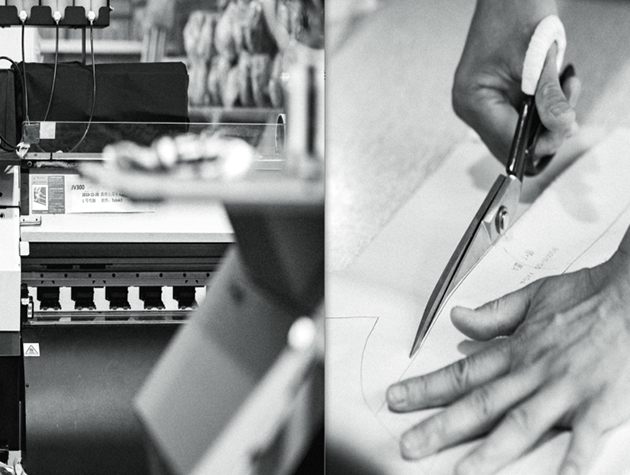Creating custom cycling jerseys using heat transfer technology is an exciting way to express individuality and team spirit. However, there are many myths surrounding heat transfers that can lead to misconceptions about their effectiveness and performance. This blog aims to debunk common heat transfer myths and provide cyclists with the essential knowledge they need for successful custom apparel.
Myth 1: Dark Colors Always Make You Hotter
One of the most prevalent myths in cycling apparel is that dark-colored jerseys will always make you hotter than lighter ones. While it’s true that darker colors absorb more sunlight, the actual impact on body temperature is more nuanced. Studies have shown that while dark fabrics can warm up more in direct sunlight, this doesn’t necessarily translate to increased heat retention against the skin.
The Science Behind Color and Heat
When exposed to sunlight, dark fabrics absorb more heat than lighter ones. However, once you start sweating, the moisture evaporates from the fabric, which can help cool you down. Some cyclists find that wearing black jerseys can actually aid in moisture evaporation, keeping them drier compared to lighter jerseys that may retain more moisture due to their color and fabric structure.Moreover, airflow plays a significant role in cooling. In windy conditions, the color of your jersey becomes less relevant as evaporative cooling takes precedence over thermal absorption. Thus, while color does matter, it’s not the sole factor affecting comfort during rides.
Myth 2: Heat Transfers Will Peel Off Easily
Another common misconception is that heat transfers are prone to peeling off after a few washes. While lower-quality transfers may have this issue, high-quality heat transfer materials are designed for durability. When applied correctly—using appropriate temperature and pressure—heat transfers can last for many rides without showing signs of wear.
Choosing Quality Materials
Investing in high-quality heat transfer vinyl or digital transfer paper is crucial for ensuring longevity. Look for products specifically designed for athletic wear, as these are formulated to withstand the rigors of cycling, including frequent washing and exposure to sweat.
Myth 3: All Fabrics Are Suitable for Heat Transfers
Not all fabrics are created equal when it comes to heat transfer applications. Some materials may not adhere well or can be damaged by high temperatures. For instance, natural fibers like cotton may not hold up as well as synthetic blends like polyester or nylon.
Understanding Fabric Compatibility
Polyester fabrics are generally the best choice for heat transfers due to their ability to withstand high temperatures and their moisture-wicking properties. When selecting a jersey for customization, ensure it is made from a suitable fabric that can handle the heat application process without warping or melting.
Myth 4: You Don’t Need to Pre-Wash Your Jersey
Some cyclists believe that pre-washing their jerseys before applying heat transfers is unnecessary. This is a myth; pre-washing is essential for removing any chemicals or sizing agents that could interfere with adhesion.
The Importance of Pre-Washing
Pre-washing your jersey ensures a clean surface for the heat transfer application. It helps eliminate any residues that could prevent proper bonding between the transfer and fabric, leading to better durability and performance over time.
Myth 5: Heat Transfers Are Only Good for Simple Designs
Many believe that heat transfer technology is limited to simple logos or text, but this is far from true. Advances in printing technology have made it possible to create intricate designs with vibrant colors using both vinyl and digital heat transfers.
Exploring Design Possibilities
Digital heat transfers allow for full-color images and complex graphics that can be applied seamlessly onto jerseys. This versatility means you can create unique designs that reflect your personality or team spirit without sacrificing quality or durability.
Myth 6: Heat Transfer Application Is Difficult
Some cyclists avoid customizing their jerseys because they think applying heat transfers is complicated or requires professional skills. While there’s a learning curve involved, applying heat transfers can be straightforward with the right tools and guidance.
Simplifying the Process
Using a quality heat press machine simplifies the application process significantly compared to using an iron. With clear instructions on temperature and pressure settings, even beginners can achieve professional-looking results with practice. Additionally, many online resources provide step-by-step guides to help you through the process.
Myth 7: Once Applied, Heat Transfers Are Permanent
While high-quality heat transfers are durable, they are not entirely permanent. Over time and with repeated washing, even the best applications can begin to show signs of wear if not cared for properly.
Caring for Your Custom Jersey
To prolong the life of your custom cycling jersey:
- Wash inside out on a gentle cycle with cold water.
- Avoid bleach and fabric softeners.
- Hang dry or tumble dry on low; avoid direct heat on transfers when ironing.
By following these care instructions, you can maintain the integrity of your designs for longer periods.
Conclusion
Understanding these myths surrounding heat transfer technology is essential for cyclists looking to create custom jerseys that reflect their style while ensuring performance. By debunking misconceptions about color impact, fabric suitability, application techniques, and maintenance care, cyclists can make informed decisions when designing their apparel.Heat transfer technology offers endless possibilities for customization without compromising quality or comfort. Whether you’re part of a competitive team or an individual rider seeking unique gear, embracing this technology will enhance your cycling experience and allow you to express yourself on every ride.

